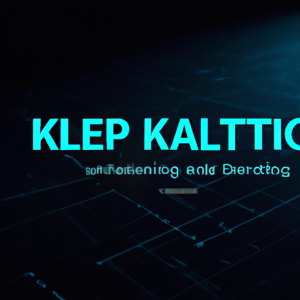Red Hat Enterprise Linux (RHEL) has been a leading choice for businesses and developers looking for a stable, secure, and high-performance operating system. With the much-anticipated release of Red Hat Enterprise Linux 9, codenamed “Alma,” on May 8, 2023, users can expect a plethora of new features and improvements that will further enhance their experience. In this article, we will delve into the exciting new features of RHEL 9, including its support for the ARM64 architecture, new container runtime, graphical installer, and more. So, let’s dive in and explore what RHEL 9 has in store for us!
1. Support for ARM64 Architecture
One of the most significant additions to RHEL 9 is its support for the ARM64 architecture. This new architecture offers several advantages over traditional x86_64 systems, including better power efficiency, increased performance, and a smaller form factor. With the growing popularity of ARM-based devices, such as the Raspberry Pi and various IoT devices, this support will enable businesses and developers to leverage the benefits of ARM64 in their projects and infrastructure.
Moreover, the inclusion of ARM64 support in RHEL 9 will also pave the way for more extensive adoption of ARM-based servers in data centers, as it provides a stable and secure platform for running enterprise-grade applications. This move aligns with the industry trend of moving towards ARM-based infrastructure, as seen with companies like Amazon Web Services (AWS) and Apple.
2. New Container Runtime: Podman
Containers have become an essential part of modern application development and deployment, offering a lightweight and portable solution for running applications in isolated environments. RHEL 9 introduces a new container runtime called Podman, which is designed to be a more secure and efficient alternative to Docker.
Podman offers several advantages over Docker, including:
- No need for a daemon: Podman runs containers without the need for a central daemon, reducing the attack surface and simplifying container management.
- Rootless containers: Podman allows users to run containers without root privileges, enhancing security and enabling multi-tenant environments.
- OCI compatibility: Podman is fully compatible with the Open Container Initiative (OCI) standards, ensuring seamless integration with existing container ecosystems.
With the introduction of Podman in RHEL 9, businesses and developers can leverage the benefits of containers while maintaining a secure and efficient environment for their applications.

3. New Graphical Installer: Anaconda
RHEL 9 introduces a new graphical installer called Anaconda, which aims to simplify the installation process and provide a more user-friendly experience. Anaconda offers several improvements over the previous installer, including:
- Streamlined interface: Anaconda features a modern and intuitive interface, making it easier for users to navigate through the installation process.
- Improved partitioning: The new installer offers better support for advanced partitioning schemes, allowing users to customize their storage configurations more easily.
- Enhanced hardware detection: Anaconda can automatically detect and configure a wide range of hardware components, ensuring a smooth installation experience for users.
With the new Anaconda installer, RHEL 9 aims to provide a more accessible and efficient installation process for users, regardless of their experience level.
4. Enhanced Security Features
Security has always been a top priority for Red Hat, and RHEL 9 is no exception. The new release includes several security enhancements that will help businesses and developers protect their systems and data from potential threats. Some of the key security features in RHEL 9 include:
- System-wide cryptographic policies: RHEL 9 introduces a unified way to manage cryptographic settings across the system, making it easier for administrators to enforce security policies and comply with industry standards.
- Improved SELinux support: RHEL 9 offers better integration with SELinux, a mandatory access control (MAC) system that provides fine-grained control over system resources and processes.
- Secure Boot support: RHEL 9 supports Secure Boot, a feature that ensures the integrity of the boot process by verifying the digital signatures of boot components.
These enhanced security features in RHEL 9 will provide businesses and developers with a more secure and compliant platform for running their applications and services.
5. Performance and Scalability Improvements
RHEL 9 also brings several performance and scalability improvements, aimed at providing a more efficient and responsive platform for running enterprise-grade applications. Some of the key enhancements in this area include:
- Optimized kernel: RHEL 9 features an optimized kernel that offers better performance and resource utilization, particularly in virtualized environments.
- Improved I/O performance: The new release includes enhancements to the I/O subsystem, resulting in faster storage access and reduced latency.
- Scalability enhancements: RHEL 9 supports larger memory configurations and more CPU cores, enabling businesses to run more demanding workloads on their systems.
With these performance and scalability improvements, RHEL 9 will provide a more robust and efficient platform for businesses and developers to run their applications and services.
Conclusion
Red Hat Enterprise Linux 9, set to be released on May 8, 2023, promises to bring a host of new features and improvements that will benefit businesses and developers alike. With its support for the ARM64 architecture, new container runtime, graphical installer, enhanced security features, and performance improvements, RHEL 9 is poised to be a game-changer in the world of enterprise Linux. As we eagerly await the release of RHEL 9, it’s clear that the future of Linux is bright and full of exciting possibilities.





